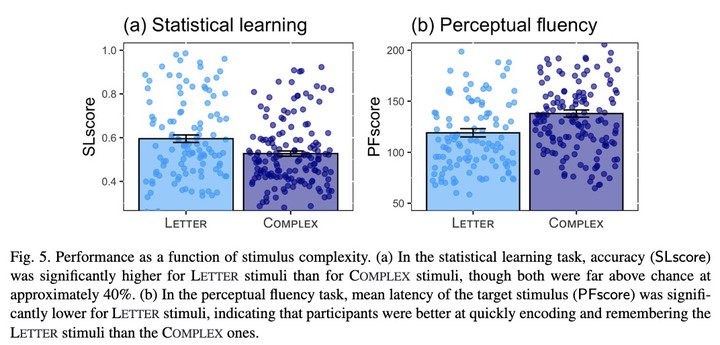The role of stimulus-specific perceptual fluency in statistical learning

Abstract
Humans have the ability to learn surprisingly complicated statistical information in a variety of modalities and situations, often based on relatively little input. These statistical learning (SL) skills appear to underlie many kinds of learning, but despite their ubiquity, we still do not fully understand precisely what SL is and what individual differences on SL tasks reflect. Here, we present experimental work suggesting that at least some individual differences arise from stimulus-specific variation in perceptual fluency: the ability to rapidly or efficiently code and remember the stimuli that SL occurs over. Experiment 1 demonstrates that participants show improved SL when the stimuli are simple and familiar; Experiment 2 shows that this improvement is not evident for simple but unfamiliar stimuli; and Experiment 3 shows that for the same stimuli (Chinese characters), SL is higher for people who are familiar with them (Chinese speakers) than those who are not (English speakers matched on age and education level). Overall, our findings indicate that performance on a standard SL task varies substantially within the same (visual) modality as a function of whether the stimuli involved are familiar or not, independent of stimulus complexity. Moreover, test–retest correlations of performance in an SL task using stimuli of the same level of familiarity (but distinct items) are stronger than correlations across the same task with stimuli of different levels of familiarity. Finally, we demonstrate that SL performance is predicted by an independent measure of stimulus-specific perceptual fluency that contains no SL component at all. Our results suggest that a key component of SL performance may be related to stimulus-specific processing and familiarity.